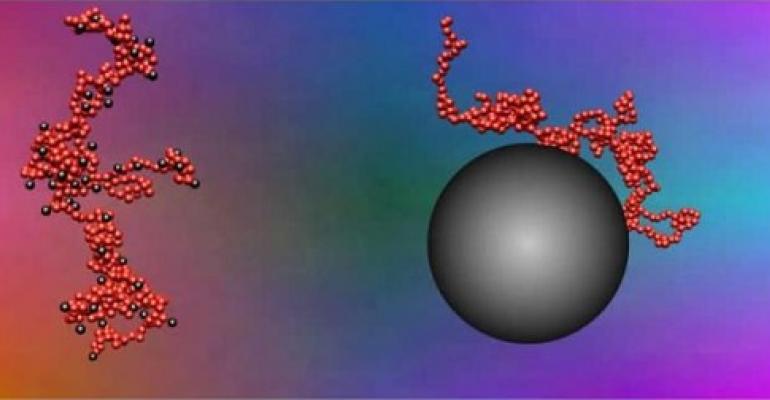Nanoparticles Improve Development of Polymer Composites
Researchers at the Department of Energy have discovered a surprising way to improve the properties of polymers by blending nanoparticles with polymer materials.
August 8, 2017

Researchers at the Department of Energy (DoE) have discovered a surprising way to improve the properties of polymers by blending nanoparticles with polymer materials.
A team of scientists led by the DoE’s Oak Ridge National Laboratory (ORNL) were studying the role of polymer structure, the interaction between nanoparticles and polymer, and nanoparticle size and shape on the structure, dynamics, and macroscopic properties of polymer nanocomposites, which are used in numerous applications.
Understanding these effects would allow the team—which also included researchers from the University of Illinois at Urbana-Champaign (Illinois) and the University of Tennessee, Knoxville (UTK) —to improve the design of new composite polymers, since they can tune mechanical, chemical, electrical, optical and thermal properties.
In particular, the team was trying to verify that shrinking the nanoparticle size would adversely affect the mechanical properties of polymer nanocomposites, but they learned something else entirely, according to Alexei Sokolov, a researcher from ORNL and UTK.
“We expected that there is a limit of how small a nanoparticle should be to affect macroscopic properties of nanocomposite,” he told Design News. “And at the nanoparticle size, we expected either no effect or deterioration of nanocomposite properties. We got a surprise.”
What researchers learned instead was not that an optimal nanoparticle size must exist, which is what they believed they would discover. Instead, they found that moving to really small nanoparticles enabled them to access totally new properties, Sokolov said.
This occurred not due to size but because small particles move faster than large ones and interact with fewer polymer segments on the same chain. Many more polymer segments stick to a large nanoparticle, making dissociation of a chain from that nanoparticle difficult.
“Now we realize that we can tune the mobility of the particles—how fast they can move, by changing particle size, and how strongly they will interact with the polymer, by changing their surface,” Sokolov said. “We can tune mobility of nanoparticles—e.g. their weight and size—and we can also tune the time of nanoparticle-polymer dissociation by tuning strength of their interactions.”
Both of these parameters affect macroscopic properties drastically, he said. “It was not possible to tune these parameters in the required range with larger nanoparticles, and this is probably the reason nobody actually tried it earlier,” Sokolov said.
|
DoE researchers have discovered a surprising way to improve the properties of polymers by blending nanoparticles with polymer materials. At left, small nanoparticles stick to segments of polymer chain that are about the same size as the nanoparticles themselves; these interactions produce a polymer nanocomposite that is easier to process because nanoparticles move fast, quickly making the material less viscous. At right, many segments of a polymer chain stick to a larger nanoparticle, making it difficult for that nanoparticle to move. Its slower movement results in a viscous material that is more difficult to process. (Jan-Michael, Carrillo, U.S. Department of Energy Oak Ridge National Laboratory) |
The team’s work has a wide range of applications, showing a new way to control the properties of nanocomposites that are already widely used, he said. “We expect that this idea will be used by many researchers to develop various polymer nanocomposites for specific applications,” Sokolov said.
Scientists plan to continue their research by focusing on detailed studies of the role of nanoparticle mobility and the time of polymer-nanoparticle adsorption on macroscopic properties of composites to achieve unique properties that weren’t possible before, he added.
Elizabeth Montalbano is a freelance writer who has written about technology and culture for more than 15 years. She currently resides in a village on the southwest coast of Portugal.
About the Author(s)
You May Also Like



